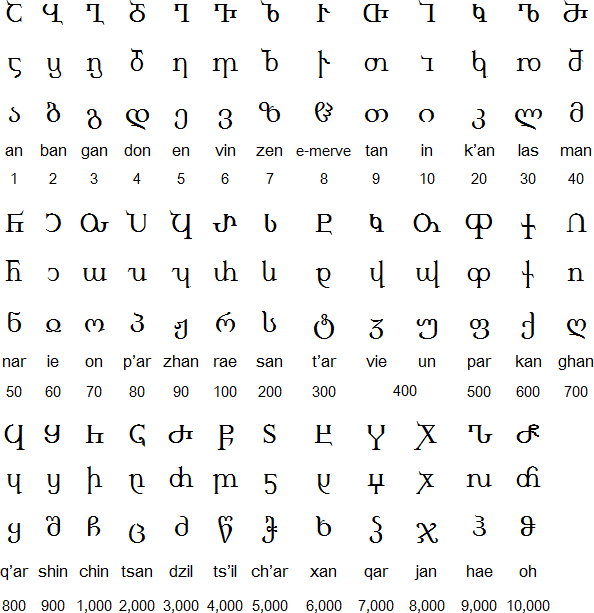




The project GE.TRANSLIT.CC has been created to support both international Georgian community spreaded around the World and people who learn Georgian. Our online Georgian converter is a powerful and easy to use tool at the same time. The transliterator is optimized to consume less resources and perform the translation faster than most of the other similar Web applications.
Using this Georgian transliteration service you can solve a few tasks. The translit converter can help you to emulate Georgian keyboard, thus produce correct Georgian letters when you type corresponding Latin (e.g. using English, German, French keyboards) keys. This feature of the transliterator serves as Georgian phonetic keyboard and can help you then, when you have no access to the conventional Georgian keyboard or Georgian keyboard layout. The Georgian keyboard emulator is also available for direct access via mouse. The on screen Georgian keyboard is located on the right side of the screen under the label "Virtual Georgian keyboard".
The Mkhedruli alphabet developed from an older Georgian alphabet known as Nuskha-khucuri between the 11th and 13th centuries. The name Mkhedruli comes from the word mkhedari which means 'of horseman'. The Nuskha-khucuri alphabet developed from the Asomtavruli alphabet.
At first Mkhedruli was used only for secular writing, while for religious writings a mixture of the two older alphabets was used. Eventually Nuskha-khucuri became the main alphabet for religious texts and Asomtavruli was used only for titles and for the first letters of sentences. This system of mixing the two alphabets was known as khucesi (priest) writing.
Eventually the two older alphabets fell out of use and Mkhedruli became the sole alphabet used to write Georgian. However, in the writings of a linguist called Akaki Shanidze (1887-1987) and in works written in his honour, letters from the Asomtavruli alphabet are used to mark proper names and the beginning of sentences. Shanidze's attempt to popularise such usage met with little success.
The first printed material in the Georgian language, in the Mkhedruli alphabet, was published in 1669. Since then the alphabet has changed very little, though a few letters were added by Anton I in the 18th century, and 5 letters were dropped in the 1860s when Ilia Chavchavadze introduced a number of reforms. 
Notable features
Type of writing system: alphabet
Direction of writing: left to right, horizontal
When printed, Mkhedruli letters are not connected at all, though they can be in cursive handwriting.
The headline letters are used for titles and headlines.
Georgian has no symbols for numerals. Each letter has a numerical value as well as a phonological one, but Indic numerals (1, 2, 3, etc) are normally used.
The order of the Mkhedruli letters is based on that of the Greek alphabet. The Georgian consontants with no Greek equivalents come at the end of the alphabet.

The Georgian Language and Culture [Prof. Shorena Kurtsikidze and Prof. Vakhtang Chikovani]:
This guide to Georgian language and culture is designed for students and instructors alike. There are five main sections to this website: Alphabet, Grammar, Literary Tradition, Folklore, and Anthropology. In addition to textual content, Prof. Shorena Kurtsikidze has included a slide show section. For example: Tbilisi Historic Pictures. Enjoy this great contribution to language learning.
Note: copyright statement. Contact the compilers for any reproduction inquiries.